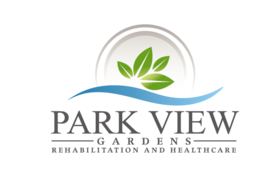PVG Culture Change in Handover
Home | Module | Survey | Course Evaluation
Advancing Excellence through Continuity of Care
--Jmariediez 21:38, 2 December 2009 (UTC)
Park View Gardens is conveniently located in Santa Rosa, California. Our unique building offers a continuum of care, which allows us to address our residents' needs emotionally, spiritually, physically, and mentally.Our nursing staff creates a family-like support environment giving residents and family peace of mind and comfort. Our 24 hour, seven days a week, nursing services cover IV therapy, wound care, enteral feeding programs, restorative nursing programs, individualized care plans, and hospice. We also offer specialized programs to meet the individual needs of each resident including therapeutic diets, social services, discharge planning, and housekeeping services.
Residents at Park View Gardens enjoy a range of activities, developed to meet their needs, including exercise programs, social and recreational activities, arts and crafts, shopping trips and other excursions (and of course BINGO!). We also offer religious services.
Our in house rehabilitation therapy team offers care for residents after hospitalization for surgery, or a serious illness. Our goal is to help residents recover so they can return safely home.
Contents
Overall Goal:
To change and modify handover culture at the facility to promote excellence in continuity of care and quality outcomes
Specific Objectives:
- Identify the needs for change and modifications in handover by conducting staff survey
- Discuss the functions of handover
- Describe and compare the different types of handover
- Review evidence-based articles on bedside handover
- Link on line resources about culture and change
- Outline implementation strategy of change from traditional to modified bedside handover in one’s station
- Evaluate outcomes through direct feedback, checklist tool
Introduction and Background
Communication of information between healthcare providers is a fundamental component of patient care. The information shared between providers who are changing shifts, referred as handover helps plan patient care, identify safety concerns and facilitates safety of information (Alvarado et al, 2006). The information imparted during this exchange is fundamental to the professional activities that follow, and consequently to the care the patient receives (Dowding, 2001). Park View Gardens is gearing constant efforts towards excellence in quality of care as skilled nursing facility and rehabilitation. Center for Medicare Services implemented a new “five star” quality rating system on December 18, 2008. Its goal is to provide nursing home residents and their families with a mechanism to assess nursing home quality, enabling them to make distinctions between low and high performing nursing homes. Each nursing home is rated on a scale of one to five stars based on three components: health inspection results, quality measures, and staffing levels. PVG is rated three stars from the Center of Medicare Services. One of the many ways to improve quality measures at PVG is by changing handover system from traditional way – away from the resident to bedside shift handover.
Need for Change
In December, 2008 the Joint Commission on Accreditation of Healthcare Organizations ([JCAHO], 2007) included the National Patient Safety Goal number thirteen requiring the organization to encourage patients to ask questions and express concerns about their own safety and to provide the means for doing so. One way for patients to get involved in their care is to hear and to give inputs during the handover of nurses. The Joint Commission International Center for Patient Safety (JCICPS)[[1]] states that the hallmark for safety and quality of care is effective communication (JCAHO, 2004). The Canadian Council on Health Services Accreditation (CCHSA)[[2]] confirms this statement by stating that patient safety is improved in an effective transfer of communications of information during shift changes (CCHSA, 2005.) According to Institute of Medicine ([IOM], 1999) at least 44,000 people and it could go as high as 98,000 people who die in the hospitals due to medical errors. The causes of medical error include failure to communicate. One in every four-medicare patient who was hospitalized from 2000 to 2002 experienced a patient-safety incident died (HealthGrades, 2004). In a retrospective study by Phillips, J.et. al (2001) on medication errors, the study accounted communications errors (15.8%) as one of the most common type of error. Annual report from the National Practitioner Data Bank stated that 426 medications related malpractice payment reports were made against registered nurses in the US 1990-2002 (2002 Annual Report, National Practitioner Data Bank, US DHHS).The human-system interface improves by creating and designing systems and processes (Reason, 1990). This includes for example improving communications and team collaborations within the handover. Striving to improve continuity of care will prevent unusual occurrences. According to the Joint Commission on Accreditation of Healthcare Organizations [(JCAHO), 2003], about 70 percent of all sentinel events are caused by communication breakdown. Communication related medical error is preventable that needs to be addressed through changing practices in handover protocol that is evidenced-based.
Review of Literature
Communication between healthcare providers is an important element for a patient centered care. Handover is central in a continuity of care (Thurgood, 1995). Further, Thurgood (1995) states that the quality of handover is affecting the continuity of care in the next shift. Shift to shift reporting has become the way of communication between nurses (Cahill, 1998). A good number of bodies of knowledge through research and literature audit have evolved and the need for intershift report is undeniable. A good continuity of care is crucial for the healthcare team and nursing reporting is specifically important in the passing on of patient data despite of challenging work in the shift (Roughton & Severs, 1996). Intershift handover is central in the delivery of continuity of care (Hoban, 2003) and in the consistence of patient care (Lally, 1999).
The goal is to have a conversation of exchange of information from the outcoming nurse to the oncoming nurse to provide effective nursing care within the next shift. Continuity of care is dependent on the present report being transferred at handover so that the next shift can readily instigate and carry out plan of care for the patients (Lally, 1999). Incorrect information will affect patient safety and the continuity of care (Anthony & Preuss, 2002). The effect of incomplete and inaccurate reporting may misconstrue nursing observation that leads to failure in recognizing and preventing disease complications and attending to changes of condition in a timely manner (Kirkley, 2004).
A nursing shift report aside from being a vehicle for transfer of patient care, it also functions as an avenue for educational purposes for nurses to discuss and validate clinical nursing decisions (Kerr, 2002), opportunity to do teaching for novice nurses, cope with stress that transpired within the shift and strengthen the nursing team cohesiveness (Parker et.al, 1992). These purposes are threaded into the process of reporting and have become an accepted norm in nursing practice. Shift reporting transfers responsibility and accountability for patients to the next shift, which emphasizes another important purpose of shift reporting (Alvarado et.al, 2006).
A good number of literatures identified the different types of handover as bedside, verbal reporting, tape recording and non-verbal. The verbal reporting occurs in a certain location, tape recording uses the tape recorder in accounting for what is going on during the shift, handover at the bedside is a walk down reporting involving the patient and non-verbal handover is when oncoming shift gets into obtainable documentations of the patient to get the necessary information. Computerized reporting is an emerging practice, however, a review of studies by Stropple and Otannie (2006) states that no research findings dealt with pure computer generated shift report.
There is not enough agreement of what could comprise a good nursing shift-to-shift reporting practice and the influence of the different types of handover practices in nursing is not clear (Lally, 1999). Furthermore, Pothier et.al (2005) stated that there is no experiential evidence that has tried to measure the resilience of nursing handover practices and also in deciding which one is the most effective and dependable handover. The process of passing on the information is variable and ritual (Pothier et al, 2005).
Sherlock (1995) states evidence of key contests supporting the importance of bedside handover against the traditional reporting. The literature concludes that the best choice is reliant on the content of the handover but it did not carry out any comparative analysis. Another study by Smith (1986) states that handover be conducted somewhere private to keep away from interruptions. The study of Hawley et al. (1995) cites that confidentiality and privacy as the common basis for the traditional handover. On the other hand, Richard (1988) states the importance of nurses to know the professional and legal issues and recommending nurses to see the patient in order to verify the handover report.
Jordan (1991) advocates bedside handover as it promotes individualized care and involves patients in their care. Moreover, Webster (1999) states there is an improvement in time incurred during bedside reporting and consequently improving the nurse-patient communications and the partnership in care. Biley (1992) states patients may not be involved in bedside handover.
Population Characteristics
Learners:
The identified learners are the PVG charge nurses, charge nurses of sister facilities of Ensign facilities and other nurses from other facilities. The charge nurses are adult learners and as such activities and learning will be self-directed. Inventory of learning styles will be addressed to so that activities will stimulate all senses including auditory, visual and tactile-kinesthetic.
Relevant Values and Beliefs:
| Group A | Group B |
|---|---|
| Highly motivated and open for change of culture in handover, thinks that change will improve continuity of care, promote patient safety, improve quality outcomes | Poorly motivated and resistant to change of culture in handover, thinks that change will not improve continuity of care, does not promote patient safety nor improve quality outcomes |
Need for Instruction:
| Group A | Group B |
|---|---|
|
|
Risk Factors:
According to Institute of Medicine ([IOM], 1999) at least 44,000 people and it could go as high as 98,000 people who die in the hospitals due to medical errors. The causes of medical error include failure to communicate. One in every four-medicare patient who was hospitalized from 2000 to 2002 experienced a patient-safety incident died (HealthGrades, 2004). In a retrospective study by Phillips, J.et. al (2001) on medication errors, the study accounted communications errors (15.8%) as one of the most common type of error.
Student Learner Outcomes
At the end of the module the learner will be able to:
- Define handover and explain its importance in nursing practice
- Differentiate and contrast different types of handover
- Identify the benefits of bedside handover versus traditional handover
- Draw out evidence-based best practices in bedside nursing handover
- Outline plans of culture change in handover at a nursing station in the facility
- Identify barriers in a culture change in handover from traditional to bedside handover
Teaching Learning Methodology
- PVG license nurses meet monthly for mandatory staff meeting and and an average twice a month for mandatory in-service. There’s so much to learn and yet there are limitations of time and resources available within the facility. In answer to this need, leadership team has been using podcasting[3] and now Wikieducator to serve the educational needs of the staff.
Learning theory
- Social learning theory posited by Albert Bandura. The theory focuses on the learning that occurs within a social context. It considers that people learn from one another, including such concepts as observational learning, imitation, and modeling.
- Health Belief Model is a psychological model that attempts to explain and predict health behaviors. This is done by focusing on the attitudes and beliefs of individuals. The HBM was spelled out in terms of four constructs representing the perceived threat and net benefits: perceived susceptibility, perceived severity, perceived benefits, and perceived barriers.
Marketing Strategy
- Draw attention through formal talk (staff meeting) and informal (casual talk) and signage campaign
- Create the message and get the word out
- Supply information and guidance. Provide materials to make it easy for staff.
- Increase understanding and compliance
- Get sustainable support from core team and management
Summary and Conclusion:
The education plan is relevant to the review of literature as the model of change followed is Lewin’s three-step model. The module addresses the unfreezing stage, making the learners realize the need for change through the review of literature presented and the survey questionnaire. The links provided for e.g. barriers of change also addresses the educational inputs needed for the team members who may be resistant to change.
The strength of the education plan is the structure of being straightforward and systematized although it could still be improved. Another strength could be the linkage and enhancement of module through podcasting catering the auditory learners. The weakness is to provide an outline for the next steps to be taken in the moving and refreezing stage in the implementation of change. Module two and three would entail the next steps of the implementation detailing the activities and the expectations. Survey questionnaire can be improved further.
The wikiprogram content is accurate and clear but could be more extensive if not of time constraints. This program will go a long way because the facility Administrator, Director for Staff Development and the Clinical Resource are receptive, excited, and supportive and are seeing the great opening for learning in this program.
References
- Alvardo, Kim, Lee, Rut, Christofferson, Emily, Fram, Nancy, Boblin, Sheryl, Poole, Nancy, Lucas, Janie and Forsyth, Shirley. (2006). Transfer of Accountability: Transforming Shift Handover to Enhance Patient Safety. Healthcare Quarterly, 9(SP)2006; 75-79
- Anthony, M.K. and Preuss, G.2002. Models of Care: The Influence of Nurse Communication on Patient Safety. Nursing Economics 20 (5): 209-15.
- Cahill J (1998). Patient’s perceptions of bedside handover. Journal of Clinical Nurse 7 (4): 351-9.
- CCHSA. 2005. Patient Safety Goals: Requred Organizational Practices and Evidence of Compliance” [announcement]. Canandian Coumcil on Health Serivces Accreditation. Retrieved November 25, 2009. http://www.cchsa.ca/pdf/PS GoalsandEvidenceJan05.pdf
- Eva M. Caruso (2009, Nov). The evolution of nurse-to-nurse bedside report on a medical-surgical cardiology unit. MedSurg Nursing. Retrieved from http://findarticles.com/p/articles/mi_m0FSS/is_1_16/ai_n27173554/
- HealthGrades. (2004). In-hospital deaths from medical errors at 195,000 per year. HealthGrade. Retrieved from http://www.healthgrades.com/media/DMS/pdf/InhosptialDeathsPatientSafetyPressRelease072704.pdf
- Joint Commission on Accreditation of Healthcare Organizations (2003). Sentinel Event Statstics [Announcement]. Retrieved November 22, 2009. http://www.jointcommission.org/SentinelEvents/Statistics
- Joint Commission on Accreditation of Healthcare Organizations (2004). Focus on Five: Strategies for Enhancing Physician-to-Physician and Staff-to-Physician Communication. Joint Commission Perspectives on Patient Safety 11(4). Retrieved Nov. 25, 2009. http://www.jcipatientsafety.org/show.asp?durki=9993
- Kerr M (2002) A qualitative study of shift handover practice and function from a socio-technical perspective. Journal of Advance Nursing, 37 (2): 125-134.
- Kirkley, D. (2004). Not whether but when: Gaining buy-in for computerized clinical processes, Journal of Nursing Administration, 34 (2004), pp. 55-58.
- Kohn, L., Corrigan, J., & Donaldson, M. (Eds.). (2000). To err is human: Building a safer health system. Washington, DC: National Academy Press. Retrieved Nov. 22, 2009 from: http://www.nap.edu/books/0309068371/html
- Lally, S. (1999). An investigation into the functions of nurses’ communication at the inter-shift handover. Journal of Nursing Management, 7(1): 29-36.
- Phillips J, Beam S, Brinker A, Holquist C, Honig P, Lee LY, Pamer C. (2001) Retrospective analysis of mortalities associated with medications errors. American Journal Health System Pharmacist, 58(19);1835-41.
- Pothier, David, Monteiro, Pedro, Mutuzua, Mooktiar, & Shaw, Allison. (2005). Pilot study to show the loss of important data in nursing handover. British Journal of Nursing, 14(20):1090-3
- Reason, J. (1990). Human Error. Cambridge University Press, doi:10.1136/bmj.320.7237.768
- Roughton, VJ, Server, MP (1996). The junor doctor handover: current practices and future expections. J R Coll Physicians Lond 30 (3): 213-4
- Strople, Bernadette, Ottani, Patricia. (2006). Can technology improve intershift report? What the research reveals. Journal of Professional Nursing. Vol (22), 3, May-June, 2006. Doi:10.10160/j.profnurs.2006.03007
- Thurgood, G. (1995). Verbal handover reports: what skills are needed? British Journal Nursing, 4 (12): 720-2.
- U.S. Department of Health and Human Services (June, 2004). Annual Report. National Practitioner Databank. Retrieved from: http://data.nicar.org/node/27
- Mark, 14 year old son who helped me understand some syntax...and my hubby Raoul.


